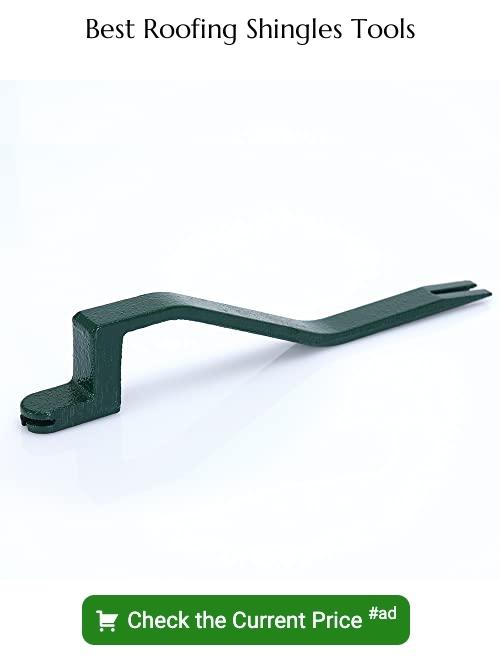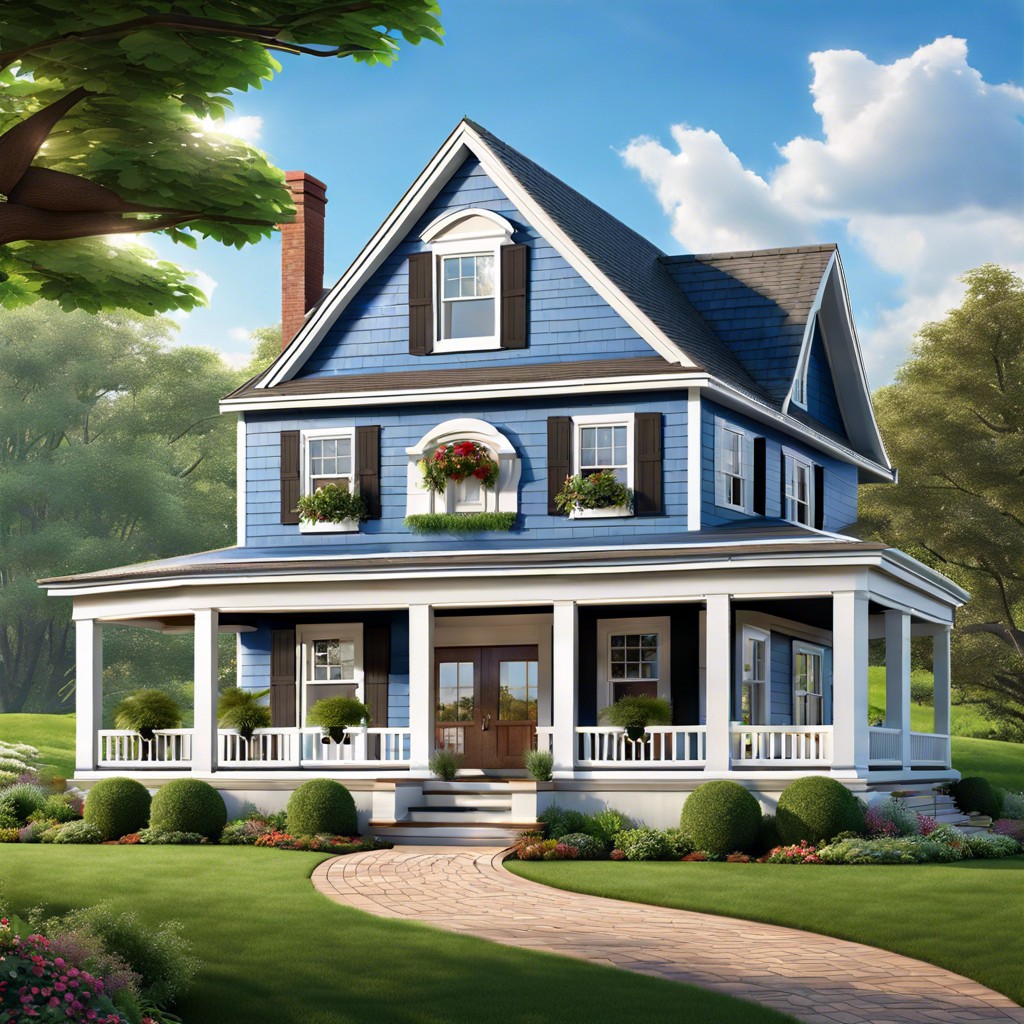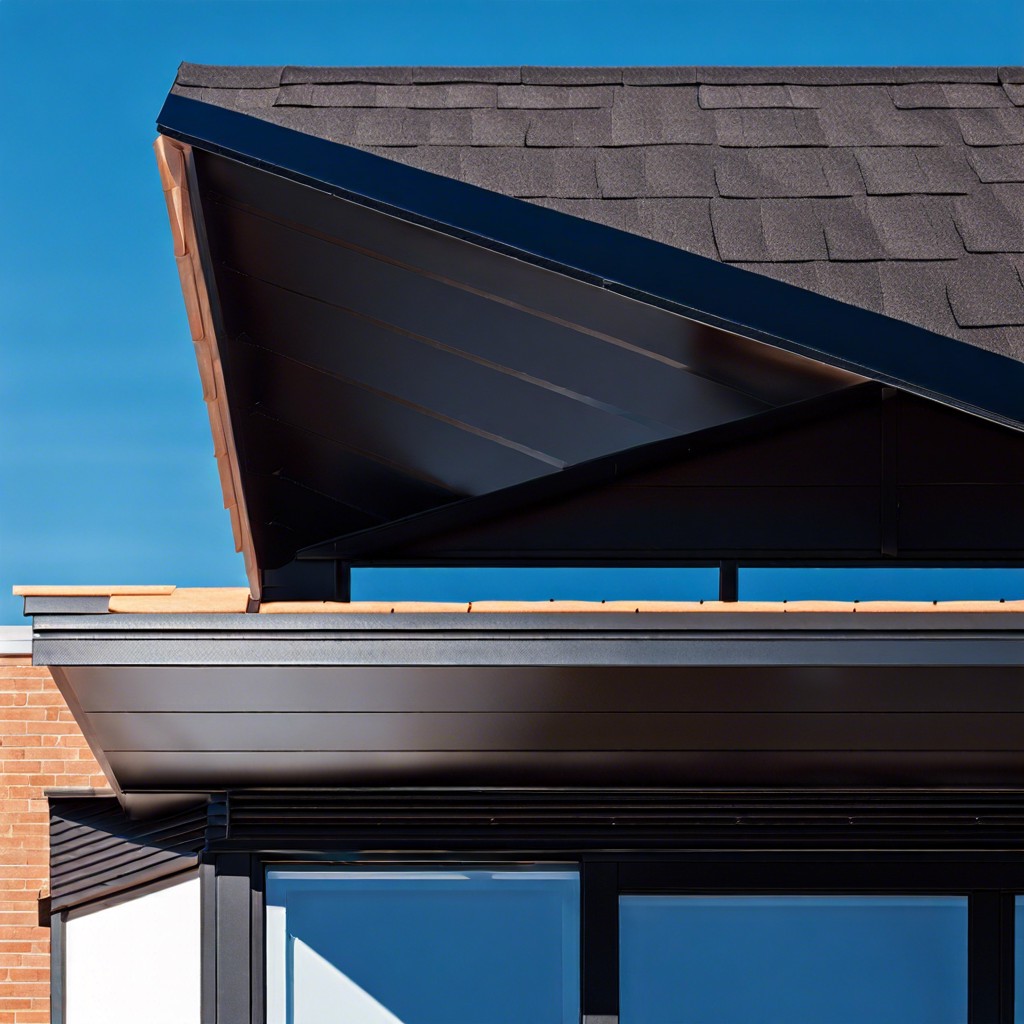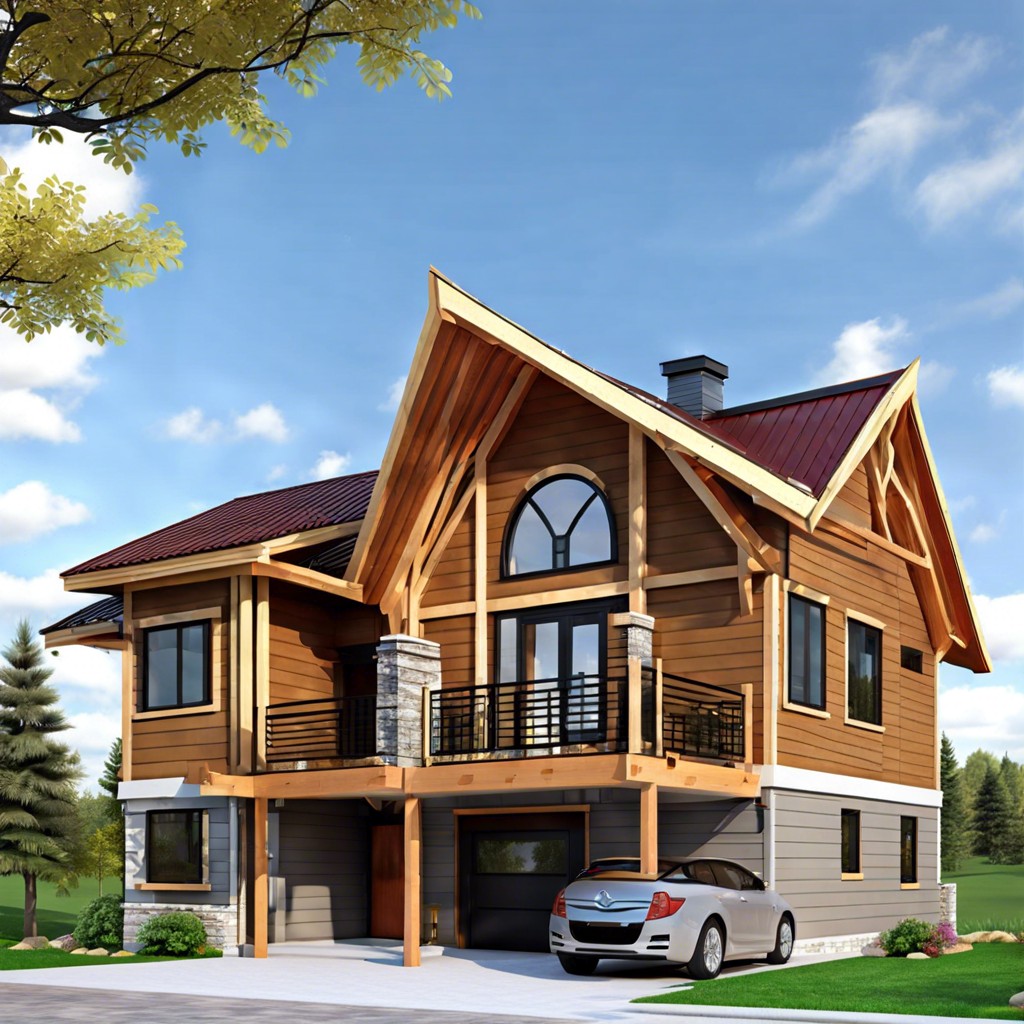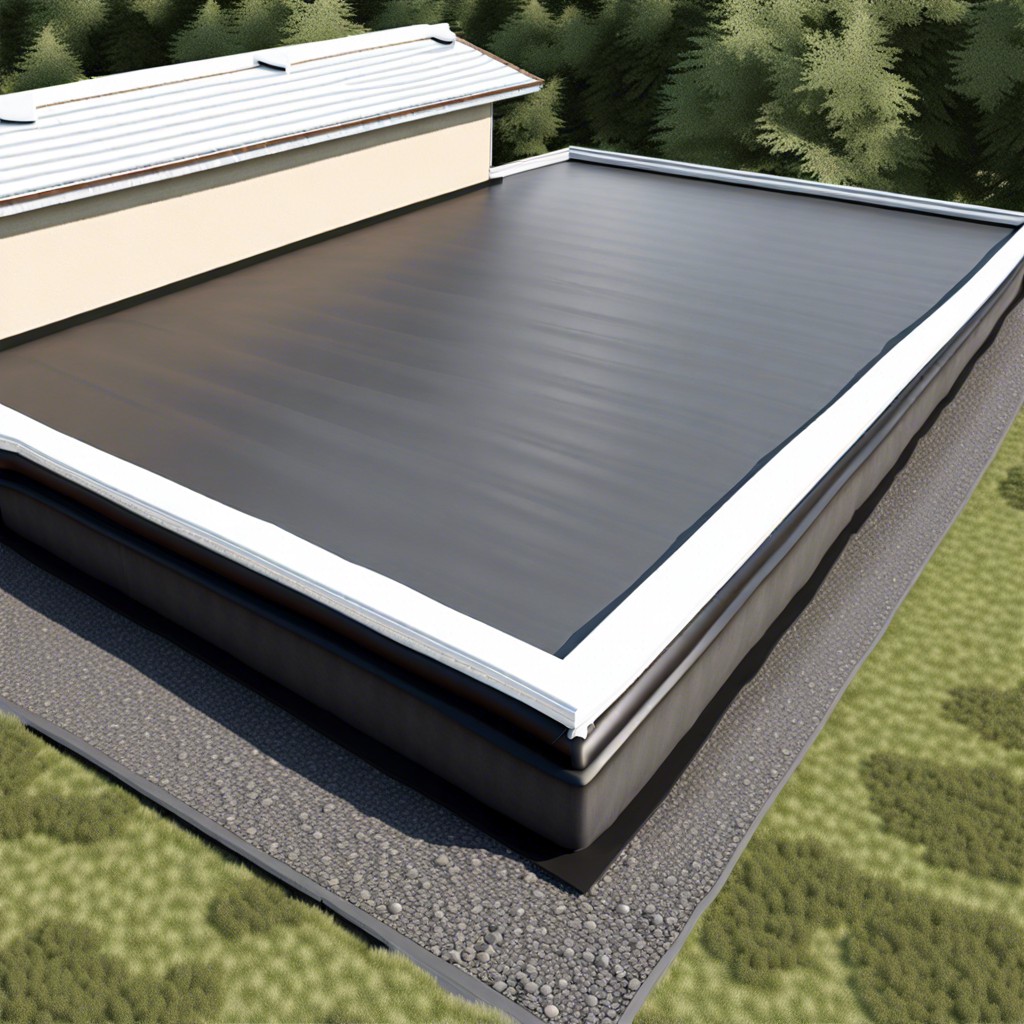Last updated on
A composition roof, a pervasive choice for homeowners, is an advanced multi-layer roofing system typically made from asphalt shingles.
Key takeaways:
- Composition roofs are made from asphalt shingles and offer durability and affordability.
- There are three types of composition shingles: 3-tab, dimensional, and luxury.
- The lifespan of a composition shingle roof is influenced by factors such as quality of materials, climate, roof color, ventilation, installation, and maintenance.
- Composition roofing presents benefits like cost-effectiveness, ease of installation, and a range of styles and colors.
- Drawbacks of composition roofing include a shorter lifespan compared to premium materials, susceptibility to algae and moss growth, and potential degradation in hotter climates.
Composition Shingles
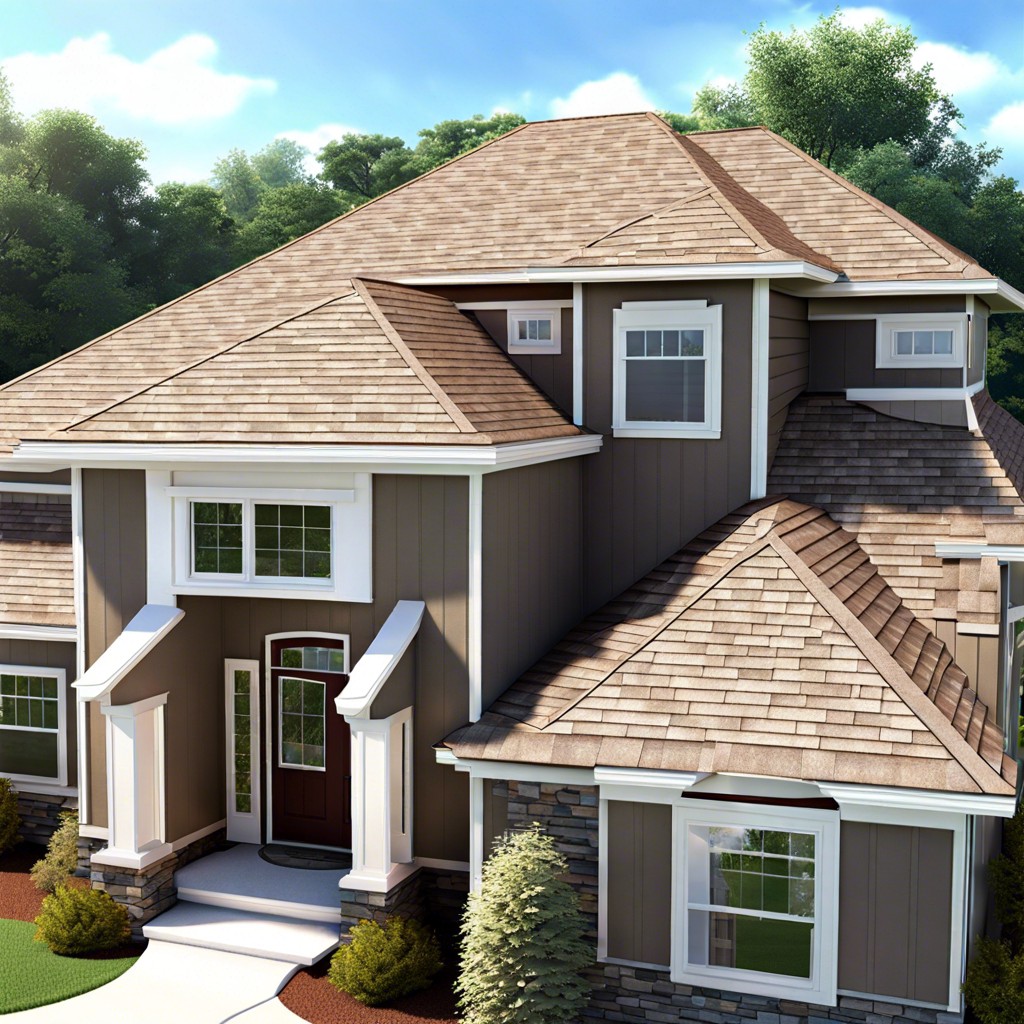
Composition shingles, commonly made from asphalt, are a popular roofing choice due to their durability and affordability. They consist of a fiberglass or cellulose mat, coated with asphalt and topped with mineral granules.
This construction offers a balance of flexibility and strength, enabling them to withstand varying weather conditions. These shingles come in a wide variety of colors and styles, making them versatile for different architectural designs.
The ease of installation and maintenance further contributes to their appeal among homeowners and roofing contractors alike. Their layered structure enhances their ability to protect homes from UV rays and water penetration, a crucial aspect of roofing performance.
Three Types of Composition Shingles
There are three essential varieties of composition shingles, each varying in durability, appearance, and cost:
1. 3-Tab Shingles:
Known for their flat and uniform look, 3-tab shingles are the most economical option. They have a single layer of material with cutouts or tabs, creating the appearance of three separate pieces when installed. Their life expectancy typically ranges from 15 to 30 years, depending on environmental conditions.
2. Dimensional Shingles:
These are also referred to as architectural or laminated shingles. They have two or more layers of shingle material bonded together, offering a richer, multidimensional texture and a more substantial aesthetic resembling wood shake roofs. Dimensional shingles are heavier, provide better wind resistance, and often come with a longer warranty, usually lasting between 30 and 50 years.
3. Luxury Shingles:
At the high end, luxury or premium shingles are the most thick and durable composition shingles available. They boast the most sophisticated and varied designs, often made to emulate natural slate or cedar shake roofing. Luxury shingles provide enhanced impact resistance and longevity, with some lines exceeding a 50-year service life.
How Long Will a Composition Shingle Roof Last?
Durability is a key concern for homeowners when selecting roofing materials. Typically, a composition shingle roof can withstand the elements for about 12 to 30 years. This lifespan is influenced by several factors:
- Quality of Materials: Higher-grade shingles often contain more asphalt, making them thicker and more durable.
- Climate: Areas with harsh weather conditions, like extreme heat, cold, or frequent storms, can shorten a roof’s lifespan.
- Roof Color: Lighter-colored roofs tend to reflect sunlight and retain less heat, potentially extending the life of the shingles.
- Ventilation: Proper attic ventilation prevents heat and moisture buildup, which can damage shingles over time.
- Installation: Expert installation is crucial. Poorly installed roofs may fail prematurely.
- Maintenance: Regular inspections and maintenance, such as cleaning gutters and removing debris, help prolong the roof’s life.
Homeowners should consider these factors and choose a roofing solution that balances cost with longevity to maximize their investment.
Pros and Cons of Composition Roofing
Composition roofing, widely favored for its balance of durability and aesthetic versatility, presents several benefits to homeowners. Among its advantages are cost-effectiveness and ease of installation. These shingles typically come with a favorable cost-to-lifespan ratio, making them an economical choice. Moreover, the lightweight nature of composition shingles eliminates the need for additional structural support, simplifying installation and reducing labor costs.
In terms of customizability, homeowners appreciate the range of styles and colors available, which can mimic more expensive materials like slate or wood shakes. Composition roofs also offer a moderate level of protection against fire and wind, and many manufacturers include warranties that span several decades, providing additional peace of mind.
However, there are some drawbacks. While composition shingles are durable, they do not have the lifespan of some premium materials such as metal or tile roofing. Exposure to extreme weather can lead to damage over time, necessitating repairs or replacement. In hotter climates, these shingles can also degrade more quickly due to intense UV radiation.
Most notably, composition roofs are susceptible to algae and moss growth, particularly in damp, shaded areas. Regular maintenance is required to prevent this, which may involve additional cost and effort. Despite these concerns, the practical benefits of composition roofing make it a highly regarded option for many homeowners, striking a balance between cost, aesthetics, and performance.
The Materials and Components That Make Up a Composition Shingle Roof
Composition shingles, commonly crafted from a mixture of asphalt and fiberglass, present a durable and cost-effective roofing solution. The asphalt provides waterproofing qualities, while the fiberglass offers strength and tear resistance.
Granules made of crushed rock and minerals are embedded in the top layer of shingle to protect against UV rays and provide color options. The shingle’s underside is coated with additional asphalt to ensure a firm bond to the roof when heated by the sun.
These shingles are layered over a plywood or OSB decking, with underlayment — typically felt or synthetic fabric — serving as an extra moisture barrier.
To optimize water runoff, metal flashing is installed at the roof’s edges and valleys. Sealants and adhesives are applied at strategic points to enhance wind resistance.
FAQ
Are composition roofs good?
Yes, composition roofs provide good protection and an appealing aesthetic at a significantly lower cost compared to other roofing systems.
How long does a composition roof last?
The lifespan of a composition roof typically ranges between 40 and 50 years.
What is the difference between composition and asphalt shingles?
The terms composition shingles and asphalt shingles refer to the same roofing material made of fiberglass or organic felt matting, impregnated with asphalt and covered with mineral granules.
What is composite roof?
A composite roof refers to a roofing system made from a blend of plastic, rubber, and recycled materials, serving as a modern alternative to traditional roofing options.
What are the main benefits and drawbacks of a composition roof?
Composition roofs, known for their affordability, ease of installation, and wide range of color options, have a major drawback that they have a shorter lifespan and are less durable than other roofing materials.
How does the installation process for composition roofs differ from other roofing types?
The installation process for composition roofs typically involves the application of a layer of asphalt shingles over a waterproof underlayment, unlike other roofing types such as tile or metal roofing that require their unique installation methods.
What are the key maintenance tips for keeping a composition roof in good condition?
The key maintenance tips for a composition roof include regular cleaning to remove debris, annual inspections to catch any potential problems, prompt repairs to address any damages, and application of a protective coating to enhance its durability.
